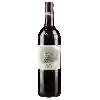
Maison BoueyChâteau la Chapelle de l'Albret
In the mouth this red wine is a powerful with a nice balance between acidity and tannins.
This wine generally goes well with poultry, beef or veal.
Taste structure of the Château la Chapelle de l'Albret from the Maison Bouey
Light | Bold | |
Smooth | Tannic | |
Dry | Sweet | |
Soft | Acidic |
In the mouth the Château la Chapelle de l'Albret of Maison Bouey in the region of Bordeaux is a powerful with a nice balance between acidity and tannins.
Food and wine pairings with Château la Chapelle de l'Albret
Pairings that work perfectly with Château la Chapelle de l'Albret
Original food and wine pairings with Château la Chapelle de l'Albret
The Château la Chapelle de l'Albret of Maison Bouey matches generally quite well with dishes of beef, veal or game (deer, venison) such as recipes of baked lasagna, blanquette of veal in the old way (self-cooker) or rabbit on the barbecue.
Details and technical informations about Maison Bouey's Château la Chapelle de l'Albret.
Discover the grape variety: Lignan blanc
It originates from northern Italy (Piedmont) where it is very often grown on trellises in front of houses. In France, this variety was introduced in 1850.
Informations about the Maison Bouey
The Maison Bouey is one of wineries to follow in Bordeaux.. It offers 509 wines for sale in the of Bordeaux to come and discover on site or to buy online.
The wine region of Bordeaux
Bordeaux, in southwestern France, is one of the most famous, prestigious and prolific wine regions in the world. The majority of Bordeaux wines (nearly 90% of the production Volume) are the Dry, medium and Full-bodied red Bordeaux blends for which it is famous. The finest (and most expensive) are the wines of the great châteaux of Haut-Médoc and the right bank appellations of Saint-Émilion and Pomerol. The former focuses (at the highest level) on Cabernet Sauvignon, the latter on Merlot.
The word of the wine: Chaptalization
The addition of sugar at the time of fermentation of the must, an ancient practice, but theorized by Jean-Antoine Chaptal at the dawn of the 19th century. The sugar is transformed into alcohol and allows the natural degree of the wine to be raised in a weak or cold year, or - more questionably - when the winegrower has a harvest that is too large to obtain good maturity.














